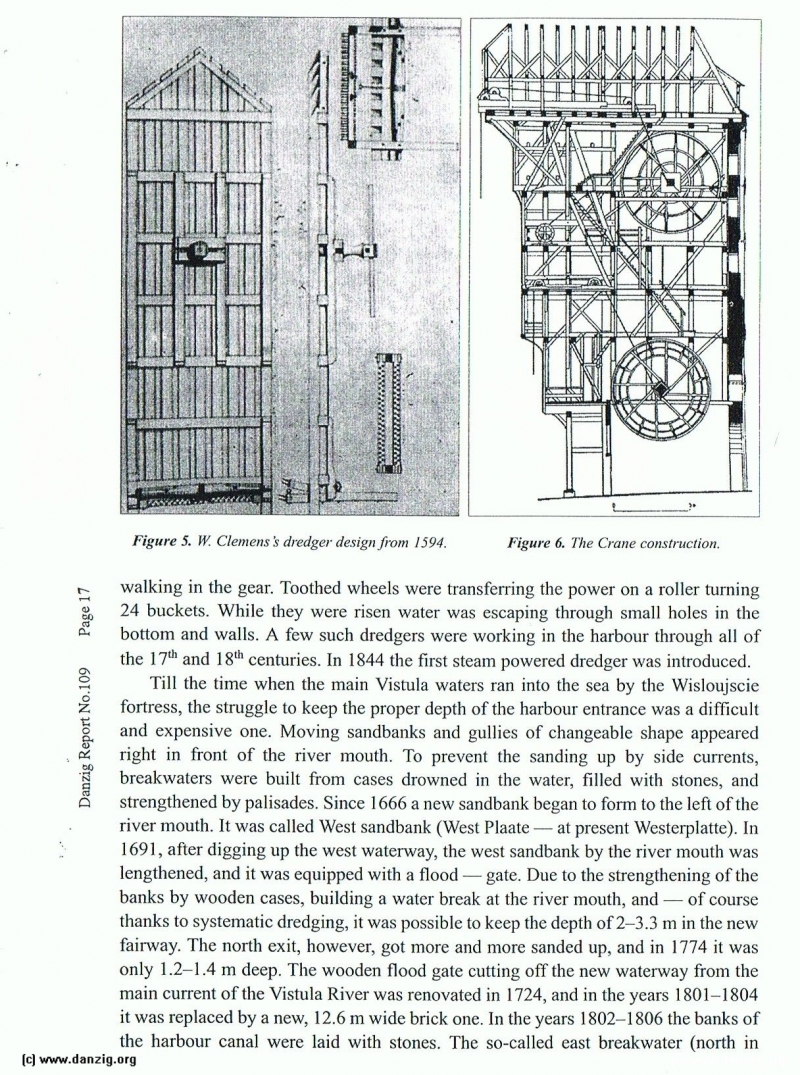
walking in the gear. Toothed wheels were transferring the power on a roller turning 24 buckets. While they were risen water was escaping through small holes in the bottom and walls. A few such dredgcrs were working in the harbour through all of the 1 7th and 8 centuries. In 1844 the first steam powered dredger was introduced.
Till the time when the main Vistula waters ran into the sea by the Wisloujscie fortress, the struggle to keep the proper depth of the harbour entrance was a difficult and expensive one. Moving sandbanks and gullies of changeable shape appeared right in front of the river mouth. To prevent the sanding up by side currents, breakwaters were built from cases drowned in the water, filled with stones, and strengthened by palisades. Since 1666 a new sandbank began to form to the left of the river mouth. It was called West sandbank (West Plaate — at present Westerplatte). In 1691, after digging up the west waterway, the west sandbank by the river mouth was lengthened, and it was equipped with a flood — gate. Due to the strengthening of the banks by wooden cases, building a water break at the river mouth, and — of course thanks to systematic dredging, it was possible to keep the depth of 2—3.3 m in the new fairway. The north exit, however, got more and more sanded up, and in 1774 it was only 1.2—1.4 m deep. The wooden flood gate cutting off the new waterway from the main current of the Vistula River was renovated in 1724, and in the years 1801—1804 it was replaced by a new, 12.6 m wide brick one. In the years 1802—1806 the banks of the harbour canal were laid with stones. The so-called east breakwater (north in
Danzig Report Vol. 1 - Nr. 109 - October - November - December - 2000, Page 23.
Hits: 3738
Added: 29/07/2015
Copyright: 2025 Danzig.org

